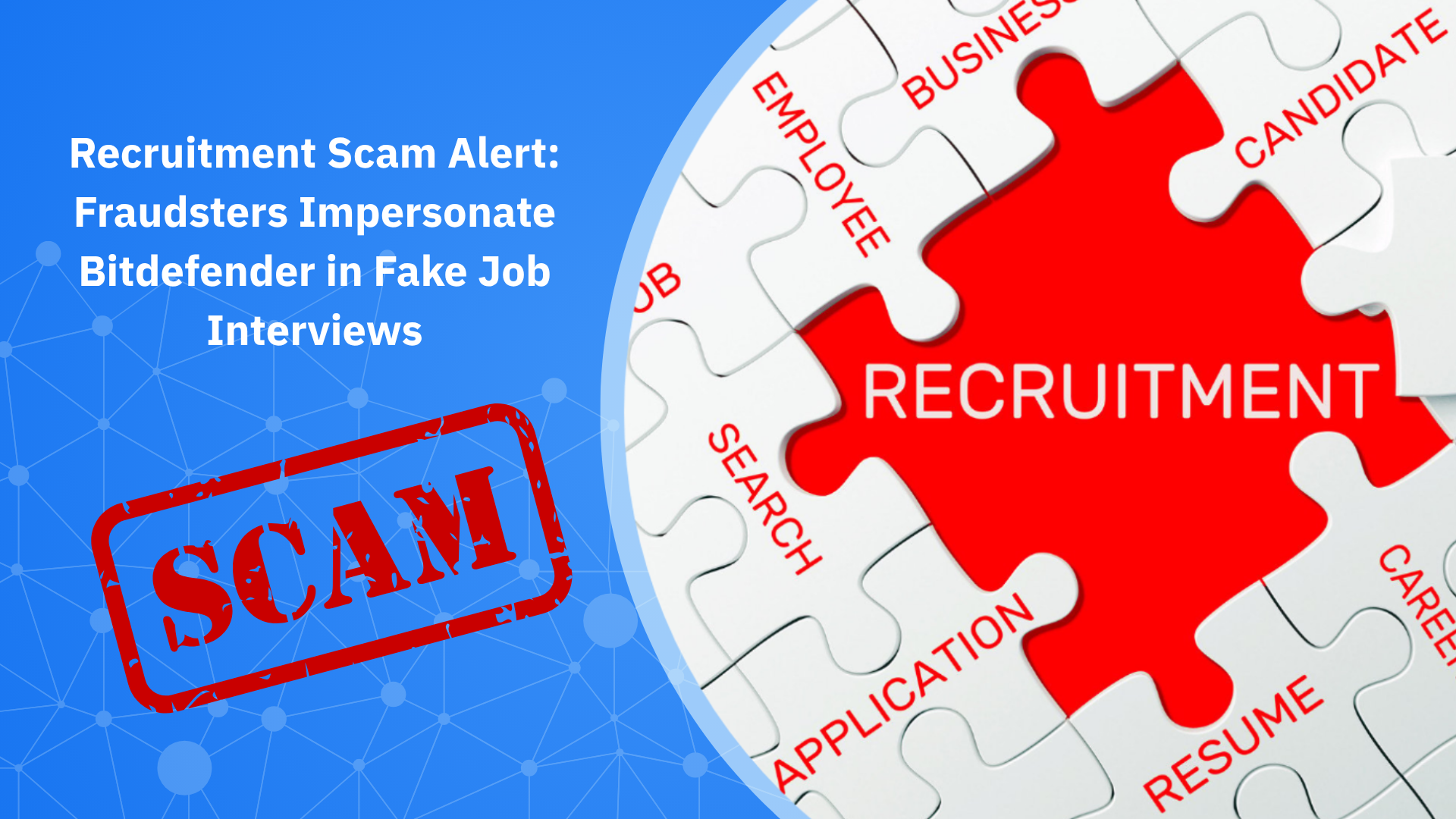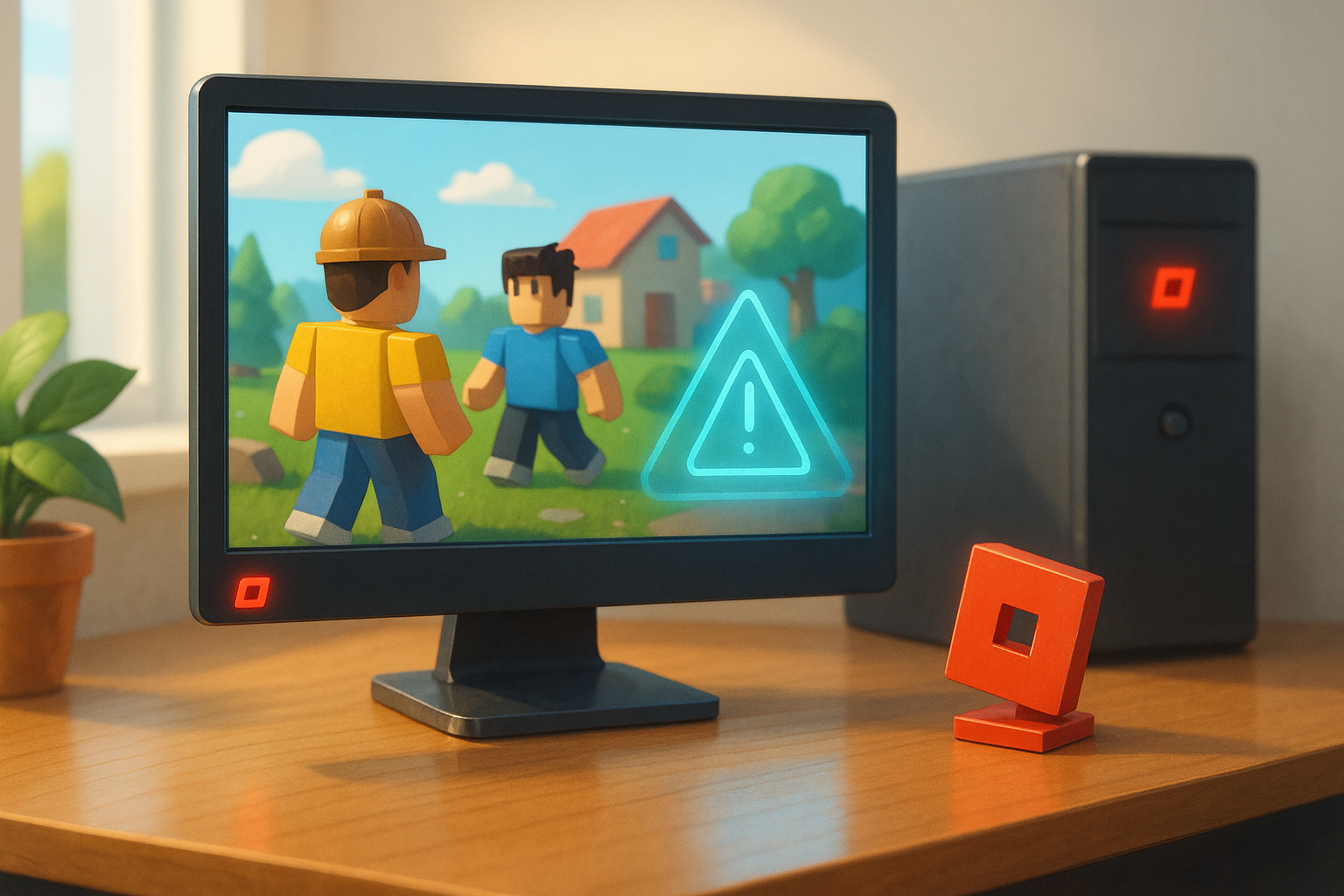Thread 1.4 Slow Rollout Leaves Smart Homes Fragmented

The long-awaited Thread 1.4 upgrade promises a unified smart home network, but staggered rollouts have many households juggling fragmented meshes for now.
Promise vs. reality
Thread 1.4 was advertised as the version that would finally merge your smart home’s many mini-meshes into a single resilient network. In practice, the fixes are arriving piecemeal across platforms, leaving many homes stuck with parallel Thread networks that don’t talk to each other well.
While Apple is lighting up Thread 1.4 in its tvOS 26 software, other ecosystems are testing or planning updates. This could mean true cross-brand harmony is still months away (if not longer) for many users. In fact, Thread 1.4 won’t be the only Border Router certification until 2026. In other words, fragmentation could linger all the way through 2025 in mixed-brand homes.
What Thread 1.4 actually changes
Thread 1.4 introduces features designed to enhance reliability, simplify setup, and improve network visibility. Mesh network users would greatly benefit from these changes, as they often encounter inter-device functionality issues within their home network. The most important changes brought by Thread 1.4 include:
- Thread credential sharing: A standardized, secure way for a Thread 1.4 Border Router to grant temporary admin access so a phone, or another admin, can pull the correct credentials and add devices to the existing Thread network, minimizing the impact of the dreaded “new hub = new mesh” situation. It relies on a short-lived ePSKc derived from a one-time passcode and is designed to avoid exposing permanent keys.
- Better IP connectivity: Thread 1.4 formalizes IPv6 via DHCPv6 Prefix Delegation (global addresses for Thread devices) and smooths IPv6 interoperability using NAT64/DNS64, both handled transparently by the Border Router. This matters for secure remote features as well as future services that expect end-to-end IP.
- Enhanced diagnostics: More standardized telemetry, including stack version, vendor info and detailed child tables can make it easier to troubleshoot multi-router networks.
- Thread-over-infrastructure: This lets Thread traffic ride over Ethernet/Wi-Fi links between segments, which is handy for larger homes or awkward RF layouts.
- TCAT (secure commissioning over TLS): A vendor-neutral way to commission devices at scale with mutual authentication; great for professionals, but also helpful in reducing flaky onboarding for home users.
- Mesh robustness tweaks: Border Routers can act as Mesh Extenders, address caches are larger, and network-data handling is slimmer, collectively reducing latency and routing thrash in busy homes.
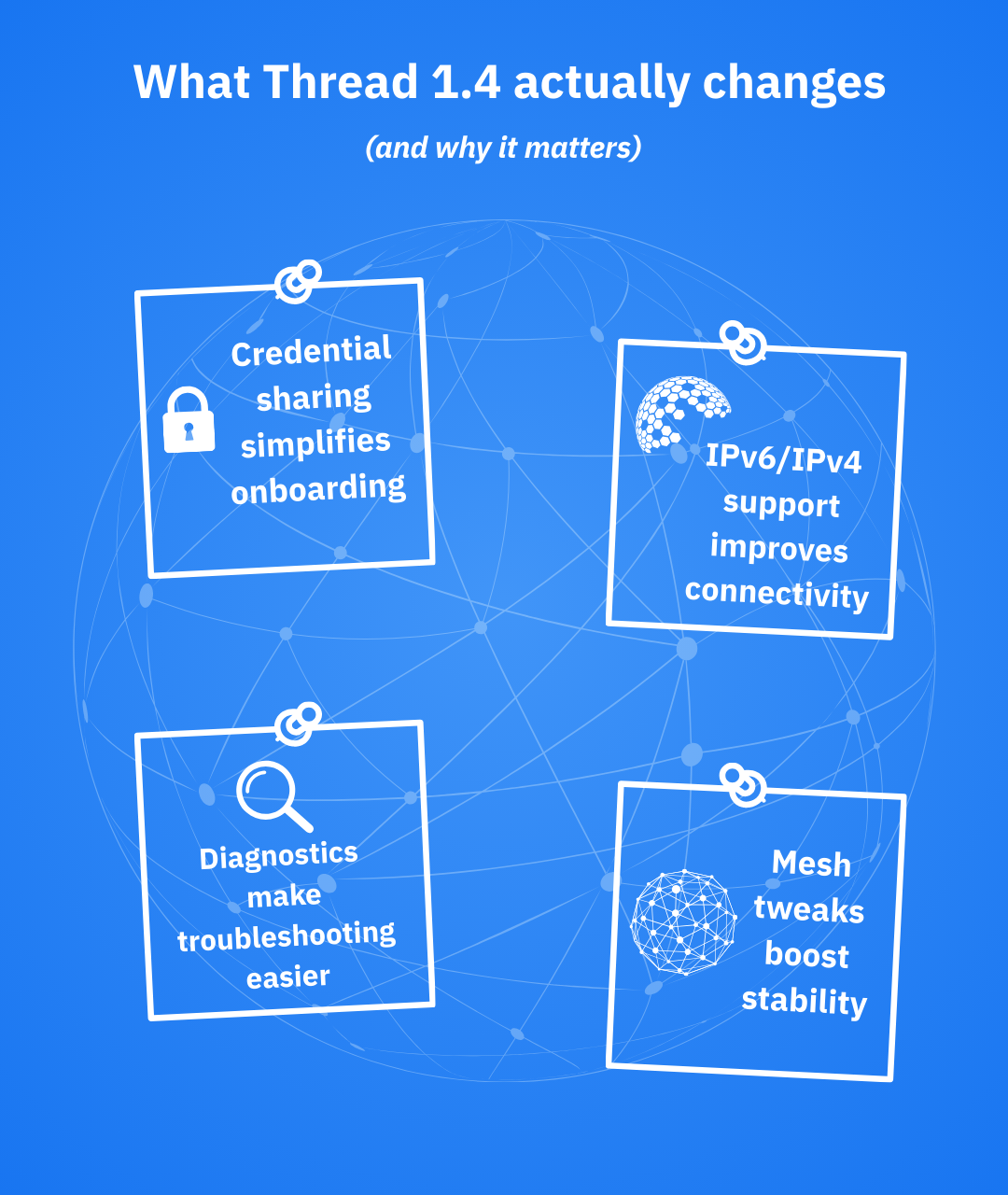
It essentially feels like Thread 1.4 “fixes the basics,” and to an extent, it is. Media and developer analyses have framed the release as the spec that standardizes credential sharing, improves manageability and enables single unified meshes instead of multiple vendor islands.
Why your home is still fragmented
Even though the spec is public and the certification program open, ecosystems move at different speeds. Apple has Thread 1.4 support rolling into tvOS 26; Google, Amazon and Samsung are at varying stages of testing and rollout. The Thread Group has also set a certification transition: after Jan 1, 2026, Thread 1.4 becomes the sole Border Router certification, which nudges everyone forward. Unfortunately, this change will not happen instantly. Until then, many houses will keep running separate meshes (SmartThings, Google, Apple, Eero, etc).
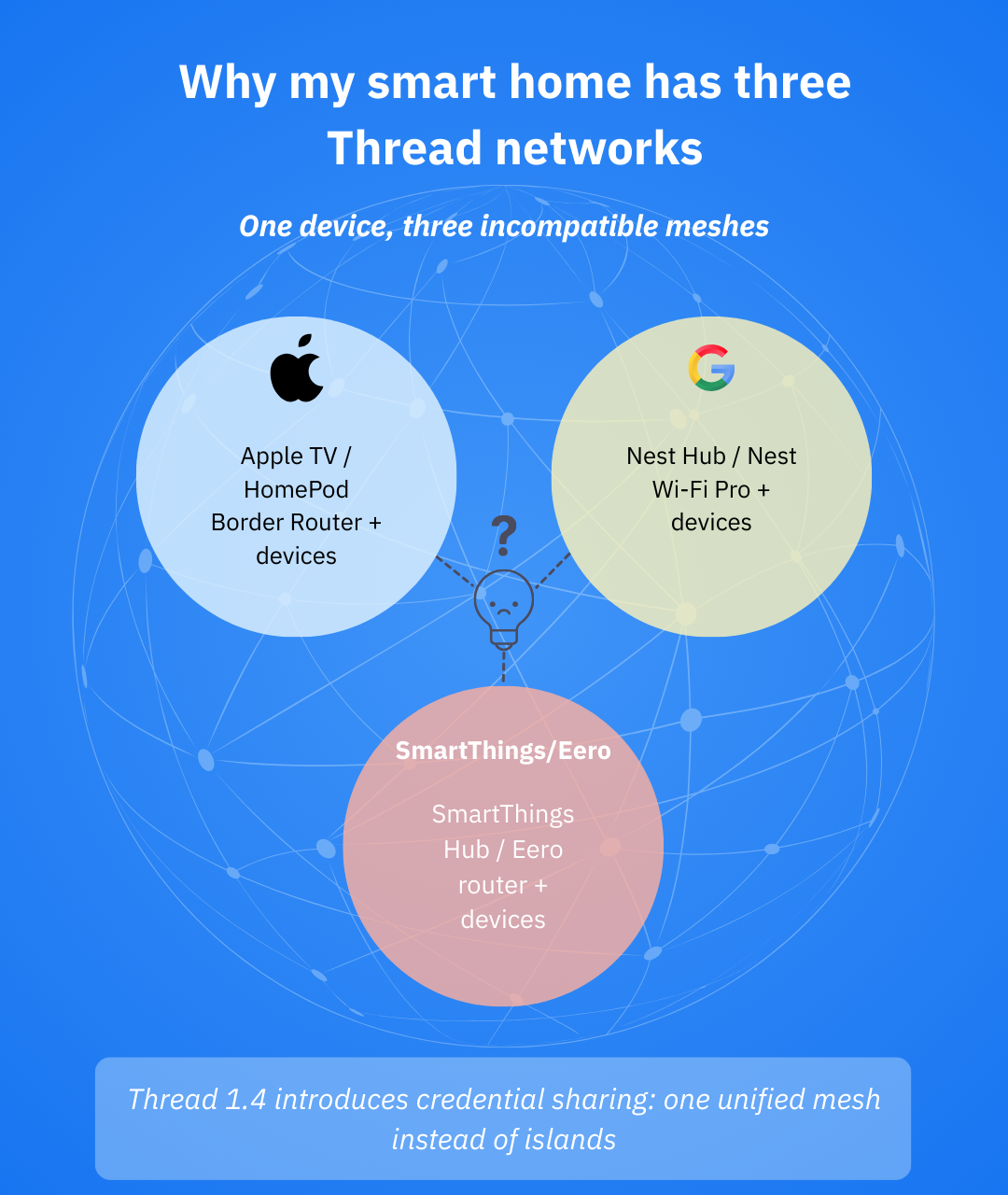
Matter’s parallel progress helps: Matter’s 1.4 added reliability and setup improvements, but the networking layer must also converge for the day-to-day experience to feel solid. Industry leaders say 2025 is about reliability and performance, with broader benefits showing up as 1.4 becomes the norm.
Symptoms of a fragmented Thread home
If you mix brands in your home network, you may notice:
- Devices “flap” between reachable and unreachable, or automatizations miss triggers
- Apps show multiple Thread networks or refuse to join the one you expect
- Adding a new Border Router creates yet another network instead of joining the existing one
- Batteries drain faster because the devices can’t consistently reach a parent router
Fewer islands, fewer blind spots
However, mere convenience isn’t the only angle Thread 1.4 aims to fix. Cybersecurity also plays a huge role. Here’s what Thread 1.4 brings to the table from a cybersecurity standpoint:
- Unified policy and updates: Fewer meshes mean fewer places where old credentials or outdated firmware can linger
- Predictable routing: The network becomes easier to monitor and baseline, making anomalies stand out clearly
- End-to-end IP done right: With DHCPv6-PD and NAT64/DNS64 (where needed) handled by your Border Router, remote access and vendor services no longer rely on brittle workarounds, reducing misconfigurations that threat actors often rely on to breach networks
Global IPv6 addressing also makes proper firewalling and timely updates more important. Keep Thread Border Routers and controller apps current, as they are the gateways that enforce security policy and filter inbound connections.
What can you do before everything flips to 1.4
Thread 1.4 is no longer a “what if.” It has turned into a matter of time instead. In other words, in the near future (hopefully), Thread 1.4 will become the norm. However, even if we’re not there yet, there are a few things you can do before it happens
1. Update your Border Routers and controllers
If you’re in Apple’s ecosystem, keep an eye out for tvOS 26. Note that other manufacturers will follow with firmware that brings 1.4 features. Make sure to keep automatic updates on to get Thread 1.4 support as soon as it becomes available.
2. Pick a primary Thread network
Configure a main Thread network and add new devices from that controller first, whether it’s Home, Alexa, Google Home, SmartThings, or any other. In doing so, you reduce the chance of spawning another mesh while you wait for 1.4 everywhere.
3. Add hubs strategically
Avoid introducing new Border Routers that don’t clearly state 1.4 support or an upgrade path. If you must add one, add it to the existing network rather than factory-creating a new Thread network. Real consolidation is expected to improve as 1.4 rolls out through late 2025 into 2026.
4. Prioritize 1.4-ready hardware
Peruse release notes and spec sheets for “Thread 1.4” or keep an eye out for vendor statements about pending upgrades. Certification for 1.4 devices is live, even though it takes longer to reach everyone.
5. Harden the edges
Change your default admin credentials on hubs, enable multifactor authentication (MFA) wherever possible and keep your home router firmware up to date. Thread’s improved online reach means your perimeter matters more than ever.
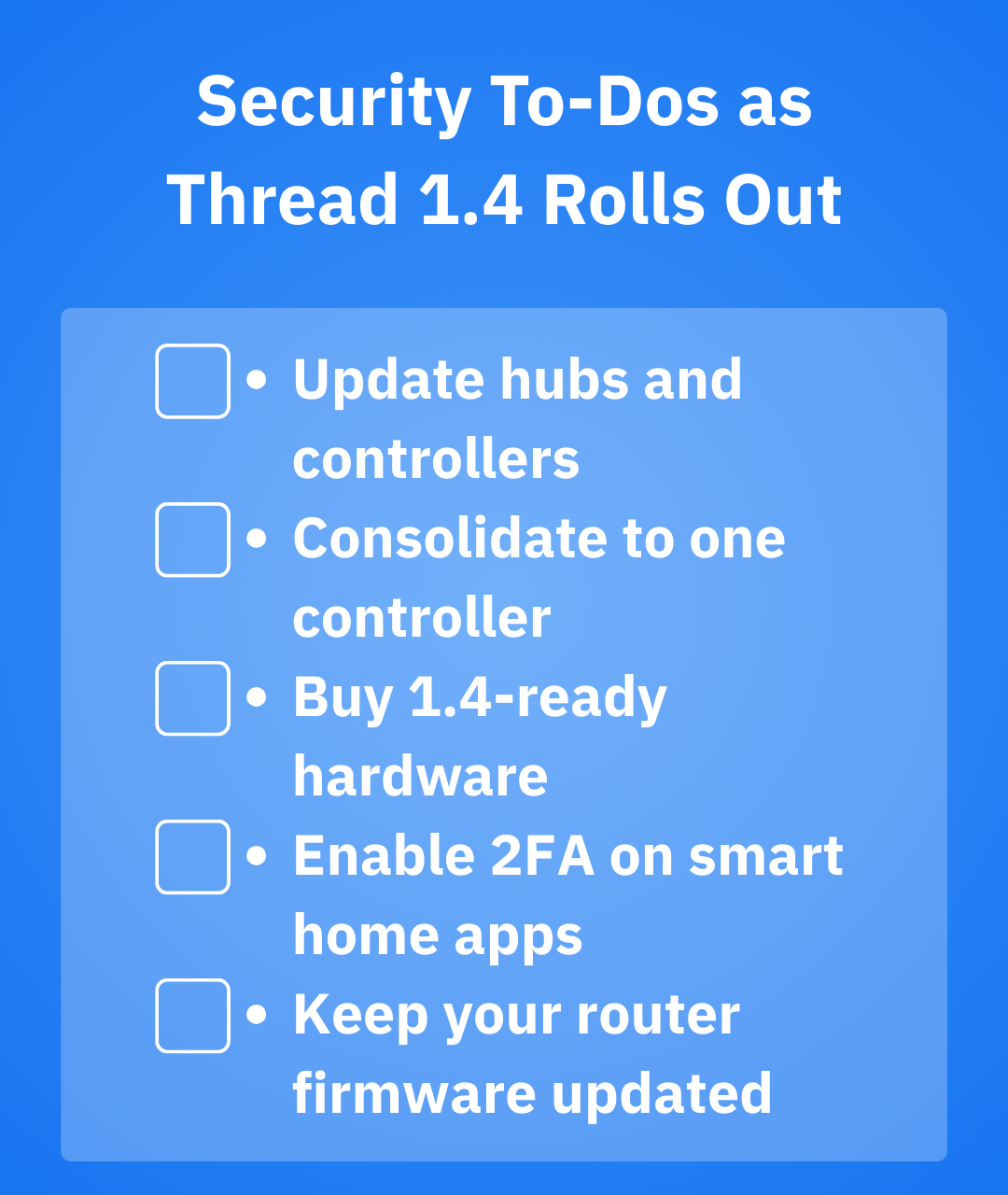
Bonus tips for late-2025 shoppers: Look for explicit Thread 1.4 support or beta programs in Apple TV/HomePod/Nest/Google, Eero and SmartThings. While Apple made its shift toward 1.4 public, others are in testing or have 2025/2026 roadmaps. Furthermore, check for recent firmware notes that reference Thread stack updates or diagnostics improvements, as both could indicate that the vendor is already aligned with 1.4’s toolset.
Conclusion
Thread 1.4 gives the industry the tools to finally end multi-mesh mayhem, namely credential sharing, better diagnostics, sturdier routing and proper IP plumbing. However, the fact that each platform ships updates at its own speed could mean your smart home may stay fragmented for a bit longer.
Keep hubs updated, commission from a single controller, and try, if possible, to favor gear with clear 1.4 support. A more unified, faster, more reliable and easier-to-secure Thread network is just around the corner – we’re just not all there yet.
Frequently asked questions about Thread 1.4
What is the Thread 1.4 update?
Thread 1.4 is the latest version of the smart home networking standard. It brings unified mesh networks, easier device setup, better diagnostics and stronger reliability.
What is the Apple Thread 1.4 update?
Apple’s Thread 1.4 rollout in tvOS 26 updates Apple TV and HomePod to support the new standard, enabling smoother device onboarding and more stable networks in its ecosystem.
Does Thread interfere with Wi-Fi?
Yes, Thread can interfere with Wi-Fi since both use the same 2.4 GHz radio band. Overlapping channels may cause congestion, but careful Wi-Fi channel selection, mindful device placement and coexistence features in routers usually keep problems minimal.
tags
Author
Vlad's love for technology and writing created rich soil for his interest in cybersecurity to sprout into a full-on passion. Before becoming a Security Analyst, he covered tech and security topics.
View all postsRight now Top posts
Recruitment Scam Alert: Fraudsters Impersonate Bitdefender in Fake Job Interviews
October 13, 2025
What are Roblox Executors and Why Do Parents Really Need to Know About Them
October 10, 2025
How to Outsmart Today’s Sneakiest Phishing Scams
October 10, 2025
FOLLOW US ON SOCIAL MEDIA
You might also like
Bookmarks



